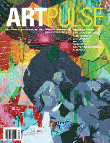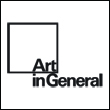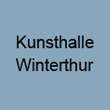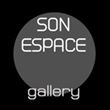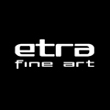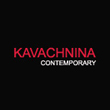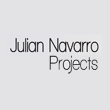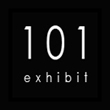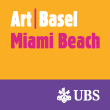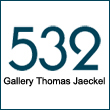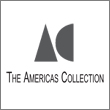« Features
Give a man a fishing rod…
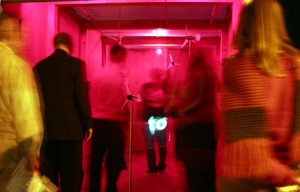
Blowing Emma, Interactive Installation utilizing HAWTs (Horizontal Axis Wind Turbines) to generate electricity to produce spoken quotes of Emma Goldman, 2008, Mark Koven 2008
-A Conversation with Mark Koven
By Claire Breukel
Mark Koven and I meet at Out of the Blue Café. It’s 10am on a Tuesday morning and he orders a jasmine tea. He has had a late night and just downed two cups of coffee before meeting me and he needs the tea to combat the caffeine. Despite this, there is a clear sparkle in his eye and I know our conversation is going to be a dynamic one.
Mark Koven is known for his elaborate multimedia installations using visual arts, sound and performance that aim to immerse the viewer and encourage audience participation. A graduate of the Florida International University (1988), he has shown extensively in South Florida including exhibitions at Locust Projects; Miami Art Museum; the Museum of Art, Fort Lauderdale as well as abroad at FlashArt Milan; Photo San Francisco and Scope, London. Mostly affiliated with alternative and museum spaces due to the interactive and questioning nature of his work, he has been collected by Miami Art Museum, MOCA, The Frost Museum and Miami Dade Art in Public Places. Koven is currently a visiting Assistant Professor at Florida State University.
I sit down with him to talk about his roles as an artist, a scientist, a sociologist and an anarchist.
CB- You were born in Miami; tell us a bit more about yourself…
MK- I’m actually a true native, but I don’t consider myself a native. In second grade my family moved out West just north of LA to a place called Thousand Oaks. I had a great childhood and because my family moved so much, I became a product of both urban and rural and also east and west. I have this strange mix, like being caught between two existences. These childhood experiences have become paramount for my work.
CB- In your work you use many references to scientific formulas and theories and you also convey a strong sense of social awareness, which seems ingrained in you as a person. Is this from how you grew up?
MK- I went to 10 different schools before I graduated high school and I think that affected how I perceive others. I’ve always loved the sciences, but it doesn’t give me enough freedom. I like the idea of exploration and testing things. The best way to describe me is as a frustrated scientist, who is really an artist. A lot of people use art for expression; I use it more as a scientific experiment. The instability of my growing up and moving made me question things and I found science to be the perfect marriage between what I wanted to say and how to say it.
For years now I’ve been setting up environments or installations that put people through paces, tasks or sociological tests. In the photographs I used to do, I was interested in how people interacted with inanimate objects. In the Gape series, I made 3D lenticular photographs that moved as you [the viewer] moved and the portrait would yawn which would cause the viewer to yawn.
CB- Looking at the social aspect of your previous work such as Social Seedlings, where people get to take home and look after a plant seedling, you mention your aim is to influence human behavior and usurp social complacency. Would you consider yourself an anarchist?
MK- It is true that I am a lover of anarchist writers such as Emma Goldman, hence the reason I did a piece [Blowing Emma] based on her writings, but I try not to let it govern my work. I often find that when anarchist philosophy takes the driver’s seat, the work takes on a negative connotation, which fights against the sense of benevolent social interaction and playfulness I like.
But in some ways I am. I’ve always been intrigued by how easy it is to survive in today’s world. We have largely an unexamined existence and I think it’s important for people to stop and think about the mechanics of things. Following the old axiom “Stop and smell the flowers” my artwork tries to make people actively participate and experience things
One of the classes I teach interweaves technology with the arts. During a class I took a nine-volt battery and touched it against my tongue to test it and the reaction of the class was of shock, no pun intended. As if something bad would happen to me…and this is a group of 19-26 year olds! This reaction comes from a lack of first-hand experience that I am in battle with. People now don’t push themselves to their limits, but rather experience things third hand. The online generation communicates, goes shopping and even dates through the computer. There is now virtual reality- when I grew up we had cartoons and movies, which I guess is the nostalgic part of my work.
CB- In juxtaposition to nostalgia, science seems unemotional- how do you feel about working with these two seemingly opposite elements?
MK- It’s interesting that others see science as dispassionate; I’ve found that scientists are more passionate about what they are doing than any artist I’ve ever met. That being said, I do think science has the ability to make things sterile and that’s why I’m not a scientist. But science mixed with a level of play makes me happy. My art is how I reach out to others and it’s informed by genealogy, astronomy, philosophy, and literature, but not so much by other artists.
CB- Do you keep up to date with what other artists are doing? For example Olafur Eliasson is an artist who uses scientific theories.
MK- If it weren’t for the current state of the art world and the careerism that exists, I probably wouldn’t bother keeping up with other people’s artwork. I do look at other artists’ methodologies and see how they make things in comparison to my own approach. I have been called an interventionist by a few, due to hijacking methodologies in order to use them against the very system that created and uses them- but I am not sure I subscribe to this wholly.

A Stones Throw, Interactive Installation utilizing 64,000 pounds of sand, catapult and stone molds, 2008. Images from the installation and the workshop at Dorsch Gallery. Mark Koven 2008
CB- Following on from the notion of careerism- your recent exhibition at the Dorsch Gallery had the same consistent themes using science, audience participation, as well as elements of the earth- and was characteristically not commercial….
MK- As early as 1988, I was creating work that was dependent on viewer interaction, also incorporating physical computing, electronics and reactive sculpture. After a short hiatus in 2001, I got back into art making, and the work I was doing became unconsciously anti-careerist. I was doing work that only lasted one night, such as in “Come” that was an elaborate event involving two Cadillac escalades, performers, cooking… However I found that in Miami there is little difference between an event and art event- they both need a commercial purpose. The same goes for gallery shows. I felt A Stones Throw at Dorsch served as an anomaly, not a pattern. We were selling $10 bags of sand as a keepsake, which in itself was a play on the idea of commodification. Buying a common rock as a need to have a commodity, but truly the emotional experience was the product.
A Stones Throw is constructed using science and childhood games. I see this show as a continuation of my goal to create a social experience that is first hand, where you literally and metaphorically have to get your hands dirty. Second, it’s cyclical in nature- in order to catapult a stone, you have to make one out of the sand and then return it by catapulting back in to the pile of sand. Third was to create a playful environment, which includes 63,000 pounds of sand and a ballista to catapult the stone. A rock is an early weapon and also a toy, striking a balance between the historical and the contemporary. There is beauty in the simplicity of skipping a stone across sand or water, which brings me back to my childhood.

Social Seedlings. Migratory interactive installation utilizing food plant seedlings, seeds, soil, spun pumice rock, and grow lights, variable dimensions, Mark Koven 2007.
CB- Do you think there is a connection between your teaching and the art you make?
MK- Absolutely. My work is about teaching, not about expressing. Social Seedling is an attempt at getting viewers to reconnect with food sources and how we view plants and animals. A Stones Throw is about a connection to the earth, making a stone from sand and feeling the sand in your hand. Things that interest me are often not art, but I see art as a vehicle of production. After doing a series of one-night performances, I became more interested in how people reacted and more so the fact that I could affect them.
CB- Would you consider this narcissistic?
MK- I think we are all narcissistic- I don’t believe in true altruism. I’ve developed other projects like Blowing Emma and Heart to Heart, where I take myself out of the work. I instigate and create an environment for others. This is the hypocrisy of it. There is a great quote by Walt Whitman who said: “Do I contradict myself? Very well, then I contradict myself, I am large, I contain multitudes.” After this show [A Stones Throw] I was able to detach myself. It was a kind of social experiment where I set up a paradigm to see what happens, which is also somewhat voyeuristic.
CB- Your work is self-described as multimedia. How would you describe your process?
MK- I hate to admit it, but there is a certain intuitive aspect to my process, which I choose to remain unconscious of. I now can look back and understand that I use science, which historically could be seen as a way to subvert belief, society, or accepted structures; although it would be foolish of me to say that I had this in mind the whole time and was aware of every feeling and nuance of my process.
Ultimately, I just like science and its ability to be myopic, elitist and exclusive, but yet all-encompassing. Rather than taking it seriously, I prefer to look at it as a chance to play with everything including people, organisms, environments, systems, structures, beliefs, and things (objects).
CB- What is coming up now that Art Basel is over?
MK- The project I’m working on now is called The Tulip Bubble, where I am working with economists and geneticists to develop three new hybrids of tulips. It takes the history of the tulip at the time of the Tulip Economic Bubble from the 15 and 1600’s and compares it to current day genetic modification of plants and food.
As for Art Basel, ironically I’m not that social. People asked me what I was doing for it and I answered “Going Fishing.” And I went fishing for two days.
Claire Breukel: Curator and art critic. Since 2006, she has been the Director of Locust Projects, a renowned Miami-based non-profit specializing in alternative contemporary exhibitions.


